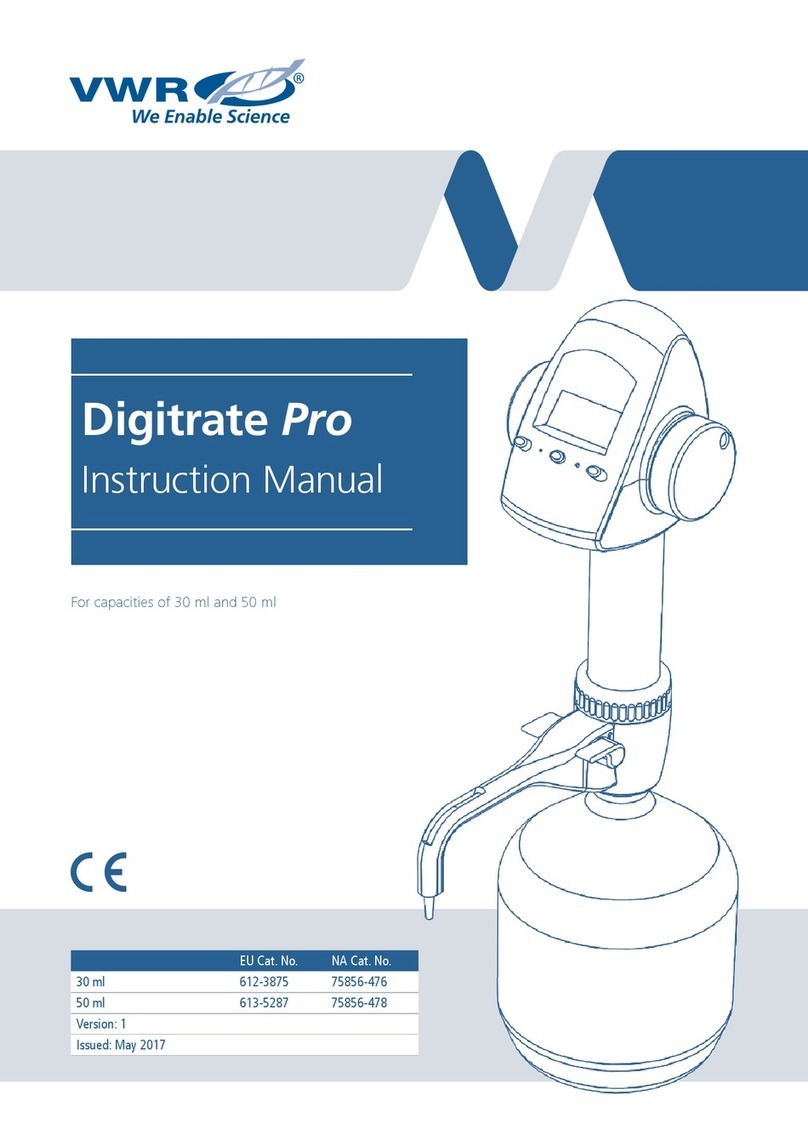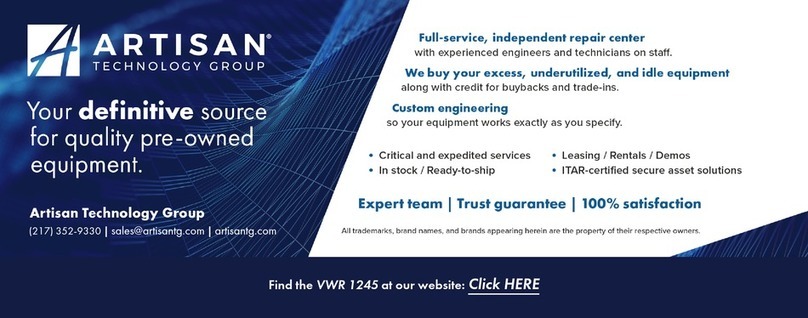
Centrifuge cannot be started, although power is on
Possible reason: Lid not closed correctly
Solution: Close lid correctly
Possible reason: No speed or time has been selected
Solution: Set speed and/or time
Centrifuge displays error “03”
Possible reason: Lid opened prior to signal “00”.
Solution: Close lid and open lid
General maintenance:
If BioHazardous Materials have been used in the centrifuge, and it is removed
from usage for service or disposal, it must be properly disinfected according to standard
BioSafety Guidelines. See Disinfection, below.
Centrifuge service
The centrifuge requires no routine maintenance other than the occasional routine
cleaning. All repairs should be performed by authorized, qualified personnel only.
Repairs performed by unauthorized personnel may void the warranty.
Cleaning the centrifuge
Always keep the centrifuge housing, rotor chamber, rotor and rotor accessories clean.
All parts should be wiped down periodically with a soft cloth. For more thorough
cleaning, use a neutral cleaning agent (pH between 6 and 8) applied with a soft cloth.
Excessive amounts of liquid should be avoided. Liquid should not come into contact with
the motor. After cleaning, ensure that all parts are dried thoroughly by hand or in a warm
air cabinet (maximum temperature 50ºC).
Cleaning the rotor
The rotor should be cleaned after each use. When spinning samples containing phenol
or phenol chloroform, the rotor should be cleaned immediately after use.
Disinfection
Should a spill of infectious materials occur within the rotor or chamber, the unit should be
disinfected. This should be performed by qualified personnel with proper protective
equipment. Information on decontaminants, their use, etc. are available in the Laboratory
Safety Manual published by the World Health Organization.
Autoclaving the rotor
The rotor and rotor shields can be autoclaved at 121°C for 20 minutes. Please be sure
to let the shields cool for 20 minutes before running them in the centrifuge.
Replacing fuses
Check the fuse when it is recommended in the Troubleshooting Guide located in this
manual. The fuse holder is located in the power inlet on the rear of the unit. Disconnect
the power cord from the power inlet. Open the fuse holder drawer by inserting a small
screwdriver under the tab and prying it open. Remove the
innermost (operative) fuse from its retaining tabs and replace the fuse if necessary. A
spare fuse is located in the outermost chamber of the fuse drawer. Replace only with a
fuse of exactly the same value as the original. (Fuse type may be found in the
“Specifications” section of this manual.)




































